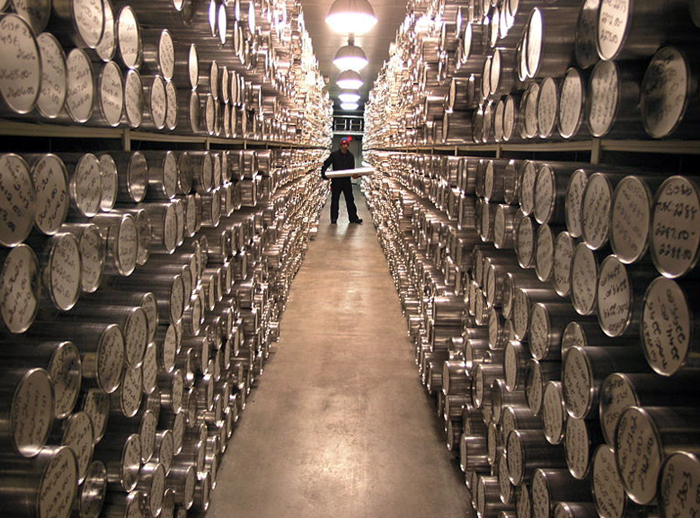|
Connecting the piecesAntarctic ice core to improve greenhouse gas climate recordPosted October 31, 2008
It’s been about 20 years since the National Science Foundation’s Office of Polar Programs The Greenland Ice Sheet Project Two (GISP2) Now the U.S. Antarctic Program Related Articles
♦ Main Story:
Deep into WAIS Divide ♦ Biology: Biological pulse ♦ Special Sun package on WAIS 2006-07 The 3,500-meter-long WAIS core, when compared and added to GISP2 data and other global climate records, will provide a fuller picture of climate change, particularly during the last glaciation, a generally colder period of time that lasted about 60,000 years and ended about 10,000 years ago. Today the planet is in what’s called an interglacial, a warmer period that separates glaciations. The WAIS core will help answer questions sparked by the results from GISP2, according to Ed Brook For instance, when climate change is abrupt in Greenland, what’s happening with carbon dioxide levels in the atmosphere? How is temperature change in Greenland related to temperature change in Antarctica? The WAIS core, with the potential for scientists to read the climate history year by year for the last 40 millennia, will help resolve those questions, Brook said. “This new core is going to let us get at questions like that: what is the connectedness of the Antarctic system to the rest of the world,” Brook said. Photo Credit: Wikipedia Commons
A section of the GISP2 ice core from 1837 meters depth with clearly visible annual layers.
He recently co-authored with Jinho Ahn, also from Oregon State University, an article in the journal Science that provided additional evidence linking carbon dioxide levels and abrupt climate changes during a similar time period targeted by the WAIS core. That study compared previously drilled ice cores in Antarctica and sediment records in the northern hemisphere. “There are sorts of global fingerprints out there of different kinds of processes changing [climate], and we’re going to be able to add to that a lot with this new core,” he said. “There are sequences of events, parts of cycles. We know one thing is driving another, and we really need to understand how those things are linked together to get the climate system right.” The key driver, he suggested in the Science paper, is ocean currents and circulation patterns. Ken Taylor, WAIS Divide chief scientist with the Desert Research Institute “There are a lot of big global patterns that are standing out when you look at the time period this ice core is going to cover,” Taylor said. For example, Antarctica experiences a “muted” version of the abrupt warming and cooling recorded in Greenland, but the changes are flipped. So when one heats up the other cools down, according to Taylor. “All of these specific questions rely on getting the ages [of the ice core layers] right,” he said. One thing the scientists are certain of is that there was “a lot of action in the climate” during the past 100,000 years, Brook said. The WAIS core and its highly detailed greenhouse gas record should give them the best seat in the house to learn more about that action. “The whole international community that works on ice coring, I think, is pretty excited about getting the results from this ice core,” Brook said. NSF funded research in this story: Ken Taylor, Desert Research Institute, Award Nos. 0440817, 0440819, 0230396 |



For USAP Participants |
For The Public |
For Researchers and EducatorsContact UsU.S. National Science FoundationOffice of Polar Programs Geosciences Directorate 2415 Eisenhower Avenue, Suite W7100 Alexandria, VA 22314 Sign up for the NSF Office of Polar Programs newsletter and events. Feedback Form |


